Graeme Krautheim
In her article “Film Bodies: Gender, Genre, and Excess,” Linda Williams isolates horror, melodrama and pornography as the ‘body genres’ – films designed to elicit spectator-response on a bodily level through their respective approaches to excess and temporality. Irreversible (Gaspar Noé, 2002) offers a unique approach to Williams’ discussion in that it incorporates each of the three ‘body genres’ within a formal structure that reinterprets bodily excess and its relationship to the spectator. I have chosen to center this paper on the scene of Alex’s rape and discuss how this particular long take is, in effect, the film’s central collision of the ‘body genres,’ and how it operates as the void at the core of the film, draining into itself every event that happens around it. I am also going to discuss how Williams’ belief that the ‘body genres’ act as approaches to cultural problems clashes with that of Noé’s cinematic realm, which seeks not to approach cultural issues, but to portray the annihilation of culture itself. Finally, apart from Williams’ analysis, I feel that Irreversible should be discussed as a film not simply preoccupied with the destruction of ‘body,’ but also with that of ‘mind.’ Irreversible not only unites Williams’ three “body genres,” but does so in a way that reaches beyond the screen, attacking the body of the spectator as well.
The film’s pivotal scene is a single, gruelling twelve minute long take, nine minutes of which involve the rape and subsequent beating of Alex (Monica Bellucci) by a man ambiguously referred to as Le Tenia (Jo Prestia). As Le Tenia forces Alex to the ground, even dialogue itself merges the sexual connotations of pornography with the abject fear of horror as he says, “I’m gonna fuck your ass… I’m gonna blast your shit hole…”. The spectator is subjected to Alex’s brutal rape in a single, uninterrupted long take. For this duration, Alex is pinned to the ground, sobbing powerlessly, her voice muffled by the hand of Le Tenia, as he rapes her anally, her shrieks of pain and bodily convulsions in sync with his thrusts and moans. The excess and obscenity of the situation is heightened as Le Tenia continues to threaten her: “You shit on me and you’re dead… fucking high class swine.” During this process, Noé essentially disappears behind the mechanics of cinema in that there are no cuts and almost no camera movement. For the full duration, the camera sits on the ground of the tunnel roughly three feet away from the incident, eye level with both victim and victimizer. With Noé not actively acknowledging himself behind the camera, there is no intermediary presence between the body of the spectator and those onscreen, establishing the scene as a “brutal intimacy model [and] test case for film’s continued potential to inspire shock and bewilderment – raw, unmediated reaction” (Palmer 23). In the wake of the rape, the camera moves (for the first time in seven minutes), only to accommodate Le Tenia, who stands over Alex’s body – a camera movement so incremental that, in the wake of the rape, it goes virtually unnoticed. Le Tenia then kicks Alex in the nose, straddles her to punch her eleven times in the face, and then grabs her by the hair and slams her head eight times into the cement floor. The spectator is unable to do anything but simply watch. In this capacity, to say that the viewer is subject to ‘violence’ is too vague a term – with ‘violence’ relatable to everything from slapstick humour to classical action movies. This is, instead, an act of all-encompassing bodily annihilation – an attack on physicality so extreme and forceful that the spectator is left powerless to do anything but react.
The excess to which the spectator is subjected naturally becomes manifest in his/her own bodily response, whether it be shock, arousal, disgust, or any combination. Williams’ statement that “the success of [the ‘body genres’] is often measured by the degree to which the audience sensation mimics what is seen on the screen” is complicated in that the gaze which the film reverses represents a spectacle so brutal and explicit that the spectator’s bodily response is seized involuntarily. Williams discusses melodrama (“tear-jerker”), horror (“fear-jerker”), and pornography (inspiring “jerk-off”) as genres whose relationships with their respective viewers involve a degree of manipulation (705). Irreversible, however, is not about manipulation, but rather, forcible extraction. The emotional consent of the spectator is as incidental to Noé as Alex’s bodily consent is to Le Tenia. The film is so severely and unrelentingly brutal that it is virtually impossible for the spectator not to experience some sort of extreme bodily reaction, whether it be voluntary or not. The rape scene represents enormous complications with regard to spectator-identification in that there is simply nowhere for any viewer to safely situate her/himself within the mise-en-scene. The positions of ‘victim’ and ‘victimizer’ as assumed by Alex and Le Tenia, respectively, exist in perhaps the most extreme opposition imaginable. For the spectator to identify with either body is to subject their own to an indirect experience of the same depraved violence. The uninterrupted duration of the long take itself further complicates spectator-identification in that not even the reassurance of montage is present to absorb the impact of the assault. If the shot were to be edited (or if even the camera were to be moved unnecessarily), the mechanics of cinema would be revealed and the spectator would be cushioned from the trauma of the violence. For the spectator to be given the sole option of identifying either with Alex or Le Tenia violates the classical approach to cinema, which grants the spectator the “ability to participate within the construct of a work and yet remain outside it” (Dixon 185). Here, if the spectator finds her/himself unable or unwilling to identify with either onscreen body, her/his identification is, through the use of the extended long take, suspended – forced to hold her/his breath until the violence has run its course.
With regard to gesture, there is an extremely significant moment at the conclusion of Alex’s rape which momentarily reverses the gaze of the camera in a way that extends beyond the diegesis, making contact with the violated spectator. While being raped, Alex, in exhaustive desperation, reaches forward, directly toward the camera. This gesture represents her complete lack of power, yet also seems to acknowledge the presence of the camera, and further, the spectator. Consequently, it represents a return of the spectator’s gaze – one which, in the wake of Alex’s bodily annihilation, “challenges the viewer to return the gaze of the supposed ‘object’ of the camera’s scrutiny” (Dixon 46). By being “gestured toward” by Alex, an act of violence is done to the spectator’s suspended sense of identification. For Alex to return the gaze at this point is for her to, by way of gesture, ask the spectator, “How could you have watched this? How could you not have intervened? What kind of person are you?” It is in such a circumstance the “‘gaze of the screen’ or ‘look back’ has the power to transform our existences, to substantially change our view of our lives, and of the world we inhabit” (Dixon 7). When Alex extends her arm, the body which the spectator has watched being violated, in turn, performs an act of violence upon the spectator’s own sense of self.
Williams divides the ‘body genres’ on several different levels, but I will focus primarily on how each operates in a temporal sense, and how that subsequently inspires the secretion of bodily fluids from the spectator. Williams temporally differentiates the ‘body genres’ by associating pornography with being ‘on time’ (situations and bodies aligning perfectly), horror with being ‘too early’ (bodies are caught ill-prepard/offguard), and melodrama with ‘too late’ (bodies in irreparable situations). The film’s reversed temporal structure aligns effectively with Williams’ approach in that, to view the film on a pornographic level (from the perspective of Le Tenia), the circumstances surrounding his encounter with Alex are timed perfectly with regard to his own intentions. The fact that Alex is unaware of her impending rape as she walks into the tunnel aligns with the Williams’ approach to horror as being ‘too early’ (not that she could ever be prepared for that which was to happen to her). However, it is the ‘too late’ of melodrama which is most effectively reinterpreted through Noé’s approach to structure. The first time the spectator sees Alex, she is being carried out of the tunnel on a stretcher, having been beaten into a coma. The film, in this sense, does not progress toward its own ‘too late’ in the classical tradition of melodrama – instead, it begins with it.
Williams further discusses the significance of a primary bodily fluid associated with each of the three genres (blood in horror, semen in pornography, and tears in melodrama), and all three are simultaneously present (whether onscreen or offscreen) during Alex’s rape, indicative of how all three of Williams’ ‘body genres’ collide. Le Tenia’s moans of pleasure (and ultimately, orgasm) collide with Alex’s (tears) sobs of agony, and at one point, while he rapes her, he asks, “You bleeding or you wet?”. During the rape, his hand is firmly clasped over her mouth – this linguistic-severing representing how “aurally, excess is marked by recourse not to the coded articulations of language but to inarticulate cries of pleasure in porn, screams of fear in horror, sobs of anguish in melodrama” (Williams 703-704). The rape is indicative of each of these three bodily discourses, with Alex’s screams (horror) and sobs (melodrama) impossible, and unnecessary to differentiate. The act of violence done to the body of the spectator is, in part, due to the fact that each of the three ‘body genres’ are operating on different levels, both relentlessly and simultaneously. Further, it is melodrama which consistently places emphasis upon “our melancholic sense of the loss of origins – impossibly hoping to return to an earlier state which is perhaps most fundamentally represented by the body of the mother” (Williams 712). It is not until the end of the film (and therefore, the beginning of the narrative), upon Alex’s realization of her pregnancy, that the film reveals the active, unspoken role of maternity as something which had been present all along. Because Alex’s pregnancy is not revealed until the end, the film demands that the viewer psychologically revisit her rape and beating with the knowledge which, in hindsight (or in reverse, foresight), compounds the already-incomprehensible extent of bodily destruction.
Some criticism has suggested that the film’s formally disorienting characteristics invite interpretations where, “we do not know if (the violence within the film) is a dream of hers, of the narrative, or if the rape sequence actually occurred at all” (Brinkema 36). I find this particular approach to be indicative of anxieties tied to bodily identification within film criticism itself. To suggest that the film’s stylized formal elements are simply the workings of a ‘dream’ is an example of the urge for even academic criticism to find a ‘way out’ for itself. In other words, the bodily impact of Irreversible is so extreme that even a conscious awareness of ‘cinema-as-construct’ is not enough – this perspective must further cushion the severity of the violence with the reassurance that a character within the film constructed the scenario itself. Because the brutality of Irreversible belongs “undoubtedly [to] a vein of filmmaking that is difficult to appreciate objectively because it is so deliberately hard to watch, so deliberately hard to like” (Palmer 31), as a means of the spectator’s own bodily self-preservation, there is a safety in denying the actuality of the events. To experience Irreversible fully, one must watch the film without interruption, and not avert their gaze from even the most extreme acts of violence. To read the film as a dream is precisely that – a means of looking away – of the spectator reassuring their own body that what they are watching is not real.
I feel it is also important to point toward a key ideological disagreement between Williams’ theory and Noé’s film, which concerns how the ‘body genres’ relate to the larger social order. Williams’ ultimate defence of the ‘body genres’ states that “to dismiss them as bad excess whether of explicit sex, violence, or emotion […] is not to address their function as cultural problem-solving” (714). Because Williams’ own legitimization of the ‘body genres’ is centered on an overarching social purpose, it is important to realize that Irreversible is exclusively and unambiguously about psychological and bodily destruction. Noé makes Williams’ claim problematic in that, in the process of merging the ‘body genres,’ he aspires to an entirely nilhistic social space, and at no point suggests (directly or indirectly) that any other possibility is viable. The bodily excess that Noé explores is not designed to call for a societal contemplation of ‘body.’ The film gestures instead to the totalizing obliteration, not only of one’s own body, but of every ‘body’ around it.
The absence of any degree of ‘cultural- problem-solving’ within the film is perhaps most explicitly represented by the fact that the man who Marcus (Vincent Cassel) hunts down, and whom Pierre (Albert Dupontel) ultimately murders with a fire extinguisher, is not the man who raped Alex. Although Le Tenia is present in the scene, and is, in fact, momentarily approached by Marcus, it is his companion whom Marcus mistakes for him, and whom Pierre kills. It is not until Alex’s encounter with Le Tenia in the tunnel that the spectator realizes that Marcus’ hysteria caused him to identify the wrong man. As the swirling camera briefly settles on Le Tenia as he watches Pierre murder his companion, Le Tenia appears quietly amazed – an effect, it seems, combined by both the great fortune of his circumstances and the effect of drugs. Marcus is most clearly representative of action and Pierre, of thought. When Marcus’ arm, however, is snapped by the man he misidentified as Le Tenia, he is no longer ‘action’ and with Pierre having committed murder, he is no longer ‘thought.’ As a result, through merely the process of elimination, Noé strands the spectator with only one remaining source of identification – that of Le Tenia himself, observing safely from the sidelines. However, because the spectator does not yet know that this man is Le Tenia, the violence of the film extends beyond it, directly attacking the psyche of the spectator.
Because of my central focus on ‘body,’ I feel that it is important to briefly acknowledge the presence of ‘mind’ as represented not only through Noé’s cinematic techniques, but though the character of Pierre. A soft-spoken philosophy professor and former boyfriend of Alex, Pierre exemplifies ‘rational’ thought, to such an extent that he negates notions of ‘body.’ In the wake of Alex’s rape, when his rational attempts to calm Marcus prove to be in vain, he states that Marcus is “not a man (but) an animal (and) even animals don’t seek revenge.” Although it may be argued that Alex is on the brink of death at the end of her ordeal (and excluding the fate of her unborn child), there is only one tangible, absolutely-certain murder in the film, and that action is performed by Pierre. When Pierre kills the man misidentified by Marcus as Le Tenia, any remaining possibility of the film’s existence in a rationally-minded world is wiped out. Before her attack, Alex explains to Pierre the occasional value of ‘body’ over ‘mind’ when she says, “Everything can’t be explained… sometimes you (simply) fuck,” expressing how the ‘rational’ thought that Pierre so firmly believes in has limitations that corporeal expression is able to move beyond.
As Marcus is about to be raped by the man he mistakenly attacked, the film transgresses into a realm where justice in any form is made impossible and where bodily destruction, in one form or another, becomes inevitable. Here, ‘rational’ thought finds itself trapped. If ‘rational thought’ (Pierre) acts, it must kill the man on the verge of raping Marcus, but if it does not act, Marcus will be raped, and likely beaten to death. When Pierre, to save Marcus, brutally smashes in the head of Marcus’ assailant with a large fire extinguisher, the ‘rationality’ which Pierre embodied (and will continue to as the film progresses backward) is destroyed. What is left within Pierre in the wake of his rejection of rationality is precisely that which produces the film’s initial sense of what Palmer refers to as “low-art body horror” (30). Pierre kills Marcus’ attacker, not simply as an act of defence, but as one of rage, bludgeoning him a total of eleven times. It is evident that the man is dead after only a few blows, yet Pierre swings the extinguisher unrelentingly, refusing to cease until the man’s head is a mound of pulp. Part of Pierre’s rejection of rationality involves his unspoken (and misguided) agreement with Marcus that this must be the man they were searching for. This translates into a horrific bodily attack which finds its justification not in the attack itself, but in its unrelenting excess. As Pierre is led out of the club by police after the incident, a voice in offscreen space angrily taunts, “Gonna get your ass fucked in prison.” Here, the film suggests that, in the act of preventing Marcus from being raped, Pierre merely transferred that same fate on to his own body. The obliteration of the film’s representation of rationality is indicative of how Irreversible presents the annihilation of “mind” every bit as much as that of ‘body.’
Williams’ discussion of ‘body’ in relation to performer and spectator is taken a step further by Noé, who actually incorporates implications of bodily ‘interior’ and ‘exterior’ into the settings of the film itself. The gay sex club which Marcus and Pierre invade as they search for Le Tenia, unambiguously called ‘Rectum,’ is a dark underground labyrinth, populated by men in various states of undress, participating in anonymous, extreme sexual acts (bondage, fisting, and numerous other sadomasochistic acts). The underground tunnel where Alex encounters Le Tenia is similarly loaded with connotations of violence, degradation, and interiority. The anal bodily implications of the tunnel (where Alex is raped) and Rectum (where Marcus is beaten) achieve a disturbing furtherance of meaning when the battered bodies of Marcus and Alex are removed from their respective settings on stretchers at the very beginning of the first, and eighth long takes, respectively. The brutalized conditions of both bodies as they are carried out of their respective representations of the anal cavity are indicative of the rape itself – of the anal discharge of blood.
A brief cameo by Noé serves to make spectator identification even more problematic on a bodily level. In the depths of Rectum, as Marcus and Pierre race feverishly past its inhabitants, the dizzying cinematography briefly pans up Noé’s own body, masturbating in a corner. Noé is clearly aware that within this hysteric, degraded cinematic space, pleasure is the most morally-problematic realm of spectator identification; therefore, it is that precise bodily experience upon which he bases his appearance. This cameo is not simply a self-conscious “wink” to the audience, but an indication of a filmmaker stepping into the moral void of his own film, establishing “a cinema of complete subject/object disintegration” (Brinkema 44). Because the shot contains frontal nudity of Noé, its own implications as a pornographic image merge the pleasure of orgasm with the film’s own atmosphere of hysteria.
In extreme contrast to the film’s dark, brutal first half, when Alex and Marcus are shown in the second half of the film (the beginning of the day), the mise-en-scène is awash in vibrant high-key lighting, as though daylight were flooding their bedroom from every possible angle. Here, Noé establishes a lush, almost-utopic space – a celebration of the exterior of the body, before its violent, unavoidable invasion. The spectator realizes quickly however, that their points of identification are as problematic as they ever were, because, to identify with either character, even in their happiest moments together, demands identification with all that is to come. When Marcus casually complains “I can’t feel my arm”, he associates his discomfort with having slept on it awkwardly, unaware that his elbow will be snapped within twenty-four hours. The most disturbing moment of foresight however, comes when Alex, nude, rolls on to her side, exposing her buttocks to the camera. Her anal cavity is digitally censored, indicating how “that morning, she had already been raped (because) there was no time properly before the trauma -the rape initiates time… (and) is a temporal violation as much as a physical one” (Brinkema 41). In each of these cases, the body is revealed to contain an awareness of the destruction that it is careening toward, which the mind has no way of grasping.
Irreversible both adheres to and rejects pornographic characteristics in its exploration of bodily excess. Palmer’s statement that “flesh… is exposed to us within arresting, corporeal aesthetics” (29), confuses ‘flesh’ with ‘body.’ Bare flesh is actively present at numerous points within the film (the scene in Rectum and a brief glimpse of oral sex at a party), particularly in the morning, when Alex and Marcus engage playfully in bed. Although it may seem obvious, the affective nature of Alex’s rape makes it easy to forget that the exposure of flesh per se is not a factor within the film’s depiction of the rape itself. With regard to pornography, Kathleen Lubey has stated that “it is the viewer’s particular and privileged position that justifies the performance’s mechanics through which the genitals offer themselves to (the spectator’s) view” (117). Here, the ‘offering’ of the genitals to the spectator is a given in pornography, yet the only point in the film where Noé settles the camera on genitals for any extensive length of time is the scene of Alex and Marcus in the morning, which is not one which includes a sexual act. In this capacity, for a pornographic interpretation to be made of Alex’s rape requires that the nudity of the following scene somehow be displaced on to it as well. On the other hand, however, within pornography, “the viewer… watches two people who perform sex because they know he is watching, and the viewer watches with a complete awareness that they are having sex for the purpose of being watched” (Lubey 116). Despite the absence of visible flesh, the fact that sex and violence are merged in an excessive, performative fashion nonetheless make associations with pornography relevant.
The rape in the centre of the film exists as a proverbial black hole within the narrative into which every event (both before and after) spirals with total inevitability. Noé both begins and ends the film with overhead shots of spiralling objects. In the first scene, Noé includes a direct overhead shot of blue lights spiralling clockwise in a circular pattern from the top of a police van, and then proceeds to spiral the camera counter-clockwise, so as to create the visual impression of a swirling drain, sucking everything into its core. Similarly, in the film’s final scene, as Alex relaxes in a park, the camera moves directly overhead a group of children playing around a sprinkler, its streams of water once again spiralling clockwise. As the camera once again proceeds to violently spin in the opposite direction, Noé concludes the film as fatalistically self-enclosed. The events that the two ‘spiralling-drains’ frame are in the process of sucking the entire narrative into a void – a black hole which finds its bodily implications in the anus, indicative of how “we can no longer read rape as an intrusion of another into the body, but as the shock of ingesting the entire world” (Brinkema 50). In this capacity, Irreversible is essentially a film in the process of draining itself, its events having communicated to both character and spectator that there are states of body and mind so dwarfing – so completely irreconcilable – that sometimes, there is nothing left to do but surrender to the void.
If classical examples of pornography, horror, and melodrama coerce emotion from the spectator on a bodily level, Irreversible could be said to forcibly seize it. Williams’ breakdown of the three genres and their subsequent impact on ‘body’ serves as a stable text against which the instability of Noé’s nihilistic cinematic world may be looked at objectively. Within this film, bodies not destroyed by circumstance are in the process of destroying themselves wilfully, establishing Noé’s merging of the ‘body genres’ as one which does not look to ‘solve’ the problems of culture, but to violently erase culture altogether. It is this proposal of absolute bodily-obliteration which is visually-presented through the film’s feverish, excessive depiction of violence. Noé realizes that the most effective means of communicating the negation of body is to, while filming the destruction of a body, reject the mechanics of cinema by vanishing behind the camera, thereby negating his own body. By the end of the film, the body – whether it be that of the character or spectator – in the excessive grips of pleasure, agony, or grief – is nothing more than an afterthought.
Works Cited
Brinkema, Eugenie. “Rape and the Rectum: Bersani, Deleuze, Noé.” Camera Obscura. 20.1. 2005. Duke UP. 32-57.
Dixon, Wheeler Winston. It Looks at You: The Returned Gaze of Cinema. New York: State U of New York Press, 1995.
Lubey, Kathleen. “Spectacular Sex: Thought and Pleasure in the Encounter with Pornography.” Differences: A Journal of Feminist Cultural Studies. 17.2. Brown UP. 113-131.
Palmer, Tim. “Style and Sensation in the Contemporary French Cinema of the Body.” Journal of Film & Video. Fall 2006. 58.3. 22-32.
Williams, Linda. “Film Bodies: Gender, Genre, and Excess.” Film Theory and Criticism: Introductory Readings (fifth edition). Eds. L. Braudy & M. Cohen. Oxford: Oxford UP., 1984. 701-715.


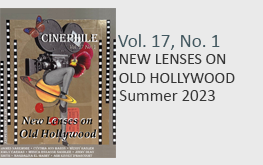
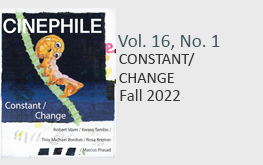
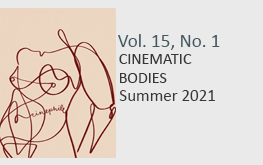
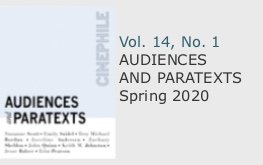
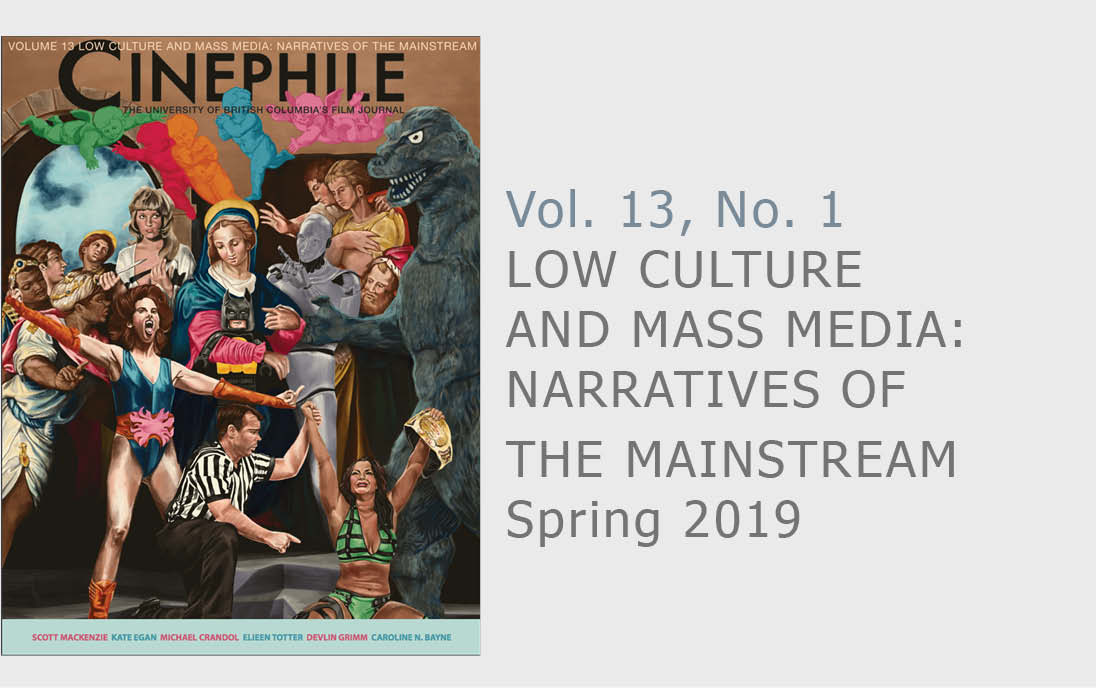
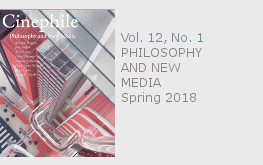
[…] was watching the Indie Sex series, ordered from Netflix, and learned of the 2002 French film “Irréversible” and wish I hadn’t. Indie Sex is a show on the Independent Film Channel, which I […]